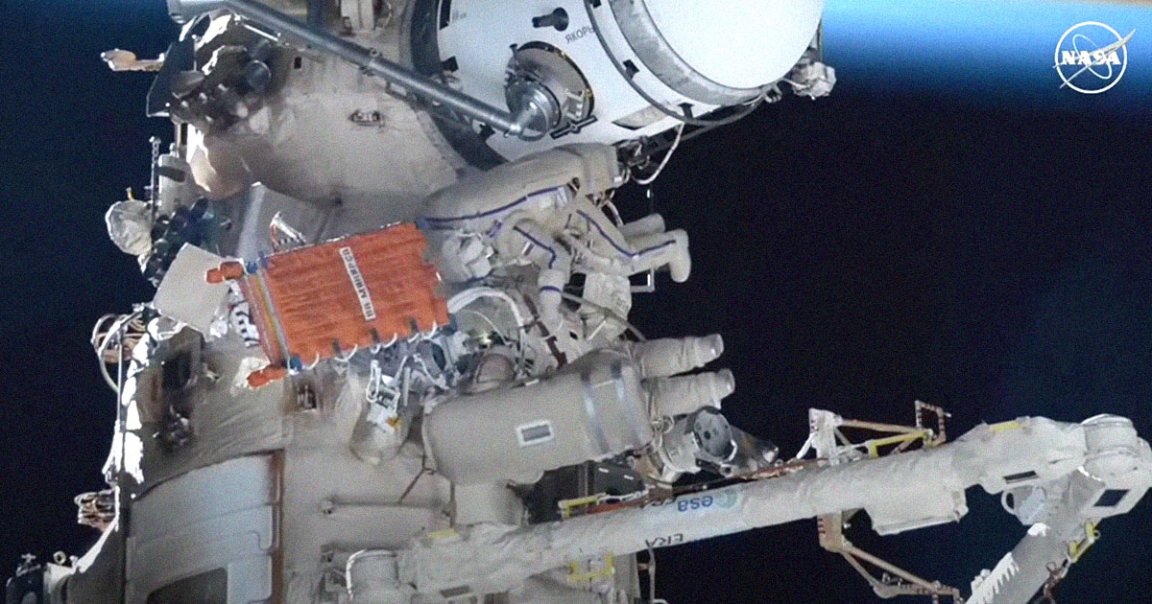
Beware the Blob
On Wednesday, two cosmonauts on board the International Space Station popped outside to examine the site of a coolant leakbut had to dodge out of the way of a toxic bubble blocking their path.
The leak, which was first spotted earlier this month and was reported to not be immediately dangerous, came with some extra complications once the cosmonauts, Oleg Kononeko and Nikolai Chub, got a close-up look.
During the spacewalk, the pair encountered a “blob” of deadly ammonia coolant, Space.com reports, some of which contaminated one of Kononeko’s tethers. To avoid spreading the dangerous substance in the station, he was forced to leave the tether outside — a treacherous situation to be in while floating in outer space.
Drilled Through
The ammonia blob wasn’t entirely unexpected. After cutting off the radiator’s supply of the coolant, the cosmonauts predicted that residual ammonia may have seeped out of the radiator’s valves and pooled together. In response, they brought extra cloths to wipe off their suits should they come into contact with the coolant.
Beyond their unusual run-in, the cosmonauts also discovered unexplained holes riddling the radiator’s panels.
“The holes have very even edges, like they’ve been drilled through,” Kononeko told Moscow Mission Control, as quoted by Space.com. “There are lots of them. They are spread in a chaotic manner.”
Leaky Segment
The Russian segment of the ISS has a peculiar history of unexpectedly sprung leaks.
In December last year, a Roscosmos Soyuz spacecraft docked to the ISS started uncontrollably spraying coolant into space.
Barely two months later in February, another Roscosmos spacecraft, dubbed Progress MS-21, also started leaking while docked to the Russian segment of the station, causing the vessel to depressurize in the process.
The incidents, both of which occurred near Russian radiators, were blamed on an “external impact” from a micrometeorite.
That’s certainly a plausible explanation, but this latest leak — which came from yet another radiator, a backup attached to Russia’s Nauka multipurpose laboratory module — adds to what some have argued is a suspicious amount of mechanical failures in such a short span.
Still, no official conclusion has been reached yet on what caused the October leak, so we’ll have to see if Roscosmos will yet again chalk it up to external forces.
More on the ISS: NASA Swabbing Outside of Space Station to See If Stuff Is Growing on It